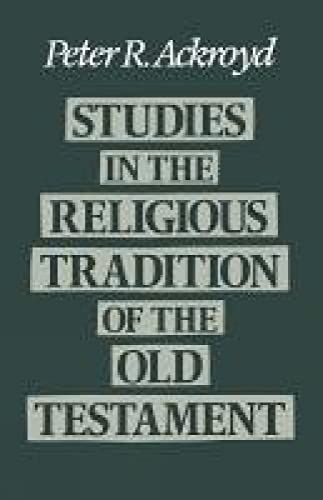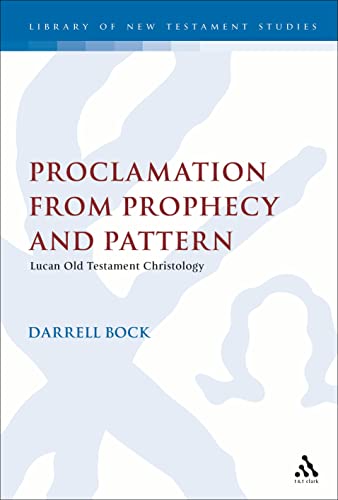The Sermon on the Mount: Utopia or Program for Action?
Written by Pinchas Lapide Reviewed By David J. FalkFor those who are interested in the Sermon on the Mount (SM), here are two new books which purport to contribute to a more accurate reading of a text that has evoked a flood of scholarly interest. Both books suggest very different solutions to the theological impasse in NT scholarship with regard to these three chapters in Matthew’s gospel.
Lapide’s book is a reading of the SM ‘by Jewish eyes through Hebrew lenses’ (p. 11). The author, an orthodox Jew, is one of a number of Jewish scholars who have shown a keen interest in rediscovering theJewishness of Jesus. Accordingly, Lapide argues that the SM has been fundamentally misunderstood due to a neglect of the Jewish context in which Jesus lived. Examined from this Jewish perspective, the Sermon’s teachings are not new, but simply a ‘Torah exegesis’ by the Nazarene (p. 15). Therefore, everything that Jesus says can be paralleled in rabbinic literature which was available to any first-century Jew. As a result, Jesus’ teachings should not be pitted against the very religious heritage of which he is a part, but rather they represent its very quintessence.
Lapide, with one eye on first-century Judaism and the other on the SM, reconstructs the Jewish context of Jesus. The work is divided into three parts. The first deals with introductory matters and with what Lapide calls the ‘preamble’ (Mt. 5:1–2, 17–20). There are several indicators in these two pericopes which profoundly signal Jesus’ Jewishness. The mountain motif—Jesus sits like a Rabbi and does not stand to teach his disciples—and Jesus’ conscious alignment of himself with the Torah of Sinai in Mt. 5:17–19, all point positively toward Judaism rather than viewing it antithetically. Typical of Lapide’s passion to interpret Jesus as a Jew, he writes of Mt. 5:17–19, ‘In all rabbinic literature I know of no more unequivocal, fiery acknowledgement of Israel’s holy scripture than this opening to the Instruction on the Mount’ (p. 14).
In the second part of the book the Beatitudes are compared to Ex. 20:2. Just as the Exodus text forms the basis for what follows in the Decalogue, the Beatitudes demonstrate God’s compassion toward all fellow humans, thus paving the way for the instruction which follows. The third largest part of the book is dedicated to a more detailed study of what has traditionally been referred to as the six antitheses of the SM (Mt. 5:21–48). In an attempt to reconstruct a more accurate context, Lapide continually translates the Greek text into Galilean Aramaic or Hebrew of the first century. He maintains that at several crucial points the Greek text is ambiguous. For example, in the six so-called antitheses where the Greek text puts ego de lego on the lips of Jesus, Lapide hypothesizes that the Hebrew equivalent would have been va ami omer lachem. Thus, ‘but I say to you’ becomes ‘and I say to you’. Thereby Jesus cannot be accused of antinomism, but rather should be seen as one who elucidates the Torah. Accordingly the so-called antitheses are more accurately ‘supertheses’ (p. 46).
This book is not only a welcome contribution to the ongoing process of understanding the SM, but is also significant because it allows students to sharpen their focus on the historical Jesus. Too often Protestant scholarship has produced a Protestant Jesus who speaks and looks like another Reformer. However, the fact is that Jesus was a Jew, he thought and spoke like a Jew, and therefore the primary context which must be reconstructed for understanding him must be Jewish. Lapide, as a Jew, has done that in a fresh and very readable book which does not shy away from present-day application. The only limiting factor of the book is its brevity. Mt. 6 and 7 are omitted from the study, and oddly no explanation is given for their omission.
As the subtitle indicates, Carl Vaught’s book, The Sermon on the Mount: A Theological Interpretation, is a very different work from that of Lapide. Vaught bemoans the fact that most biblical exegesis loses the text in its insatiable desire ‘to analyze the components and the strata from which the interpreter insists that it has been constructed’ (p. xiii). Therefore, he proposes a ‘theological interpretation’. This is defined as an interpretation which assumes the larger biblical context. Vaught writes, ‘This commentary is theological just insofar as it brings the theological dimension of the other gospels and epistles to bear upon what might appear to be an essentially ethical, social, or political document’ (p. xi).
The hermeneutical key, according to Vaught, which unlocks the meaning of the SM is ‘divine perfection’. Hence, Mt. 5:48 becomes the paradigm through which the entire SM is seen and Jesus’ demand for divine perfection is the overarching theological theme which unites the various themes in the Sermon. This fits neatly with Vaught’s ‘theological interpretation’. Thus the focus becomes primarily theo-logical rather than anthropological. Instead of interpreting the Sermon as a collection of unrealistic ethical demands made on humankind, the starting-point is the divine perfection which was originally embodied by the preacher of the Sermon. Perfection is simply defined as Christian maturity; ‘what we were meant to become; to be perfect is to be mature; to be perfect is to reach the stage of mature self-development that moves beyond the initial moment of Christian commitment into the fullness of life to which Christ calls his followers’ (p. 117).
With this schema, Vaught approaches the text in order to expound his ‘correct’ interpretation of the SM. He divides the Sermon into four parts. The first includes the prologue (5:1–2), the Beatitudes (5:3–12) and the metaphors of salt and light (5:13–16). In this section, the context of the SM is given and inner and outward conditions for divine perfection are outlined. In the second part, the author deals with five practical problems which impede divine perfection. Strangely, Vaught only acknowledges five issues in Mt. 5:21–48, while the text clearly contains six separate introductory formulas signalling six issues rather than five. Adultery and divorce are lumped together as one. Vaught would have done better to follow the obvious division which arises out of the text. The third part deals with ‘six expressions of perfection’ (6:1–7:6). In this portion of the Sermon, Jesus outlines in very practical terms how divine perfection is expressed in everyday life. Finally, the fourth part of the book deals with the remaining portion of the Sermon (7:7–29) under the title of ‘Final Considerations About God’s Kingdom’. In other words, like most other works, this one as well struggles with how to understand the miscellaneous details which are in the latter part of the Sermon.
Vaught’s book reads like an extended sermon. In fact this genre might be dubbed ‘philosophical devotional exegesis’. Without doubt the philosophical overtones are present as Vaught himself warns, being a philosophy professor. That in itself makes the book interesting reading. It is necessary that laypersons take their turn at biblical interpretation. The Bible is too important to leave its interpretation solely in the hands of the professional theologian. To its detriment, however, the book contains a number of obvious errors which could have been avoided with a more careful handling of the text. For example, commenting on Mt. 5:3, Vaught makes a point on the future tense of the verb when in reality it is present.
Both books are an attempt at the ‘correct’ interpretation of the SM like all previous books on the topic. Neither is definitive, but each makes a contribution toward that goal. Many insights can be gleaned from both, but Lapide’s book is by far the more interesting and more significant in the process of understanding Jesus’s powerful message contained in the SM and is highly recommended.
David J. Falk
Centro de Entrenamiento de los Hermanos Mennonitas, Montevideo, Uruguay






